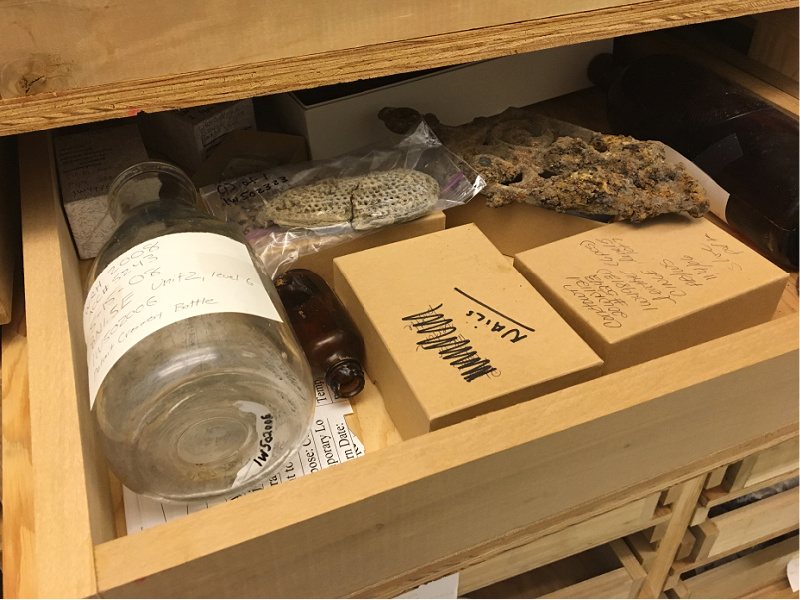Wayne State University’s Gordon L. Grosscup Museum of Anthropology has received a grant from the National Endowment for the Humanities (NEH) that will help evaluate the preservation and accessibility of the museum’s Detroit Archaeological Collections (DAC) and begin efforts to improve access to these collections.
“The Detroit Archaeological Collections includes everything from food remains to worn out shoes, Cracker Jack toys and broken shipments of dinner plates,” said museum Director Megan McCullen, Ph.D. “These items reflect both the daily life and economic systems of our neighborhoods, and the city’s role in the larger world system. Archaeological materials can represent families and individuals that are otherwise overlooked by historical documents, expanding our understanding of who we are as a city.”

The NEH’s Preservation Assistance Grant is being used for the museum’s Assessing Preservation and Storage of the Detroit Archaeological Collections (DAC) at Wayne State project, which will allow a development plan to improve access to and storage of these extensive collections for use within Wayne State and by community partners.
The pilot project will be the reorganization and imaging of objects, particularly architectural materials, excavated from Fort Lernoult (aka Fort Detroit or Fort Shelby) by Arnold Pilling from 1962-1964, upon the construction of the Detroit Bank & Trust Building (211 Fort Street). Fort Lernoult was occupied by both the British and American militaries and was a significant site during the War of 1812.
The Museum of Anthropology’s grant received supplemental funding from the NEH program “A More Perfect Union.” In preparation for the country’s semiquincentennial, the NEH — one of the largest funders of humanities programs in the United States — is supporting projects that promote a deeper understanding of American history and culture.
“The creation of ‘A More Perfect Union’ has helped us to focus our efforts on our Fort Lernoult collections,” McCullen said. “Those of us in the Great Lakes region know the significance of Detroit through the centuries, but many people elsewhere are unaware of its roles prior to the auto industry. Using the remains of Fort Lernoult, which was built by the British during the Revolutionary War, to give people a physical connection to the area’s national significance, through the War of 1812, will begin deeper conversations about our relationship to the rest of the country and the world.”
About the Museum of Anthropology
The Wayne State University Museum of Anthropology was founded in 1958 by Arnold Pilling, professor of Anthropology, to house archaeological collections excavated by students and faculty in the greater Detroit area, and to store other anthropological objects for teaching and exhibition.
In 2009, the Museum was named in honor of Gordon L. Grosscup, emeritus professor of Anthropology and longtime curator of Archaeology at the Museum. The Museum is housed in Old Main on Wayne State University’s campus, and collections include over half a million objects, primarily housed in the Detroit Archaeological Collections. The gallery is currently closed to visitors as part of the COVID-19 restrictions on the WSU Campus.